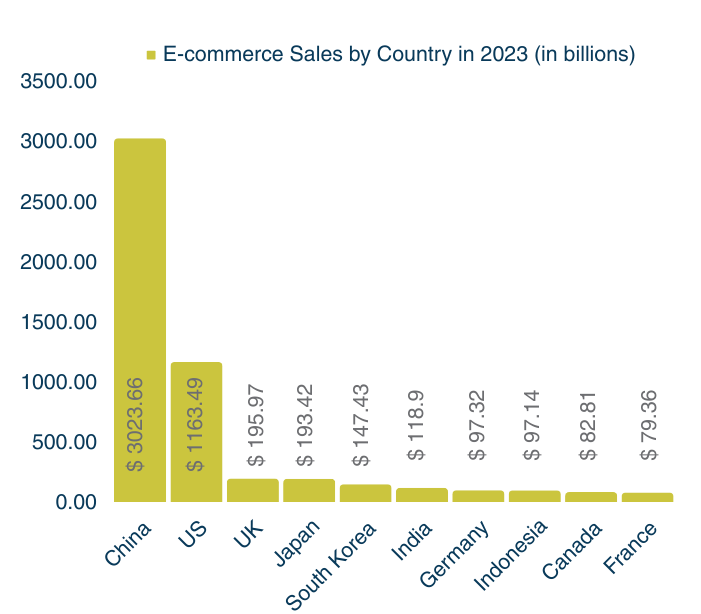This blog dissects social commerce in the business realm. To better understand how social media and e-commerce work together, our research explores the role social commerce plays in the advancement of women-owned businesses. The piece’s core objective is to provide an overview of social commerce, emphasising its importance, especially for the growth of women’s entrepreneurship through social media to reach markets. Further, it focuses on the women benefitting from this route and how social media allows them to become resellers and grow in a manner that accommodates their need for a flexible schedule and allows them to be the primary caregivers in their households.
Background
Post the advent of social media, its continuous evolution has of a society addicted to mobile phones. Not surprisingly, human beings try to capitalise on such an opportunity to gain access to a ready-made market waiting to be exploited. With the increasing popularity of several social media platforms, easy access to millions of people can be converted into a market to sell and purchase goods and services. This allowed e-commerce to gain traction all over the world. E-commerce can be defined as the use of digital and electronic modes of information processing and communication to carry out economic transactions. Many of these economic transactions occur via an e-commerce platform like Amazon that mediates the process by matching supply and demand and managing payment and delivery. However, all of these e-commerce platforms require their users to have registered businesses and formal financial accounts. Hence, there is limited to no access to most businesses, especially those run by women who have low incomes and are, in most cases, neither socially nor financially included. This is where social commerce comes into the picture. It successfully allows these women to sell their products and services through social media platforms such as Facebook, WhatsApp and Instagram, thereby creating a new generation of an entrepreneurial society driven and empowered by social media. In this article, we will look at how this method of market access came into being, what attracts women to the prospect of social media and the innumerable ways these platforms foster business growth and development worldwide.
Market Access in the Age of E-Commerce and Social Commerce
The global e-commerce market’s revenue, including sales from formal platforms and social media, is expected to surpass US$ 113.5 billion in 2023. The global e-commerce sales are estimated to reach 20.8 per cent of the total sales by the end of the year and 23 per cent by the end of 2025. The growth rate between 2023-2027 is expected to be approximately 14 per cent. The projected e-commerce market, by the end of 2027, would have a revenue of US$ 191.4 billion. While currently, India is not a leading player in the e-commerce market, the country has one of the top 10 fastest growth rates in the world.
China is the largest global e-commerce market, accounting for 46.3 per cent of all retail e-commerce sales worldwide. It also has the most significant percentage share of the world’s digital buyers at 841.1 million or 39.4 per cent of the global number. The United States is the second-largest e-commerce market, continuing to grow, crossing over a third of China’s numbers in the past year. The third largest e-commerce market in the world is the United Kingdom, accounting for 4.8 per cent of the global retail e-commerce market. It is followed by Japan with a share of 3 per cent and South Korea with a share of 2.5 per cent (Source: Shopify).

Source: Shopify

Source: Oberlo
By 2030, India’s digital consumer economy is projected to become a US$ 1 trillion market due to the strong adoption of e-commerce and EdTech services in the nation. (Source: IBEF)
India has over 12 million individuals who sell or resell products and services (Source: ONDC). With almost every individual nowadays owning a smartphone, social media is helping these people grow their businesses. Social commerce, or what can be referred to as informal e-commerce, is rising in popularity and is expected to double in growth from $492 billion worldwide in 2021 to $1.2 trillion in 2025. (Source: Insider Intelligence). This is because of its unique proposition globally to countless people who otherwise would face difficulties in entering the business world. At the same time, social commerce is also an opportunity of development for businesses already in existence that are seeking growth.

The global social commerce market is also seeing significant growth, with its estimated sales for 2023 reaching $30.5 billion from the $23.7 billion reported in 2018 (Source: The Economic Times). This means that in 2023 the global social commerce figures could reach approximately 27 per cent of the overall global e-commerce figures. India’s social commerce sector is developing fast, expected to grow by 39 per cent (Source: Business Wire). This is also because many small businesses in Asia Pacific economies use social media as their main storefront. It serves as their primary tool to attract sales and accomplish marketing reach. Myanmar, Thailand, Cambodia and Bangladesh rely heavily on social commerce for their sales. In fact, in Bangladesh, about 15000 small merchants earn $20 million through sales from Facebook—approximately 40 per cent of their total B2C e-commerce transactions (Source: UN ESCAP).
SCORE’s data indicates that over three-fourths of small businesses use social media to increase brand awareness, enhance customer service, and drive sales (Source: Business.com). Facebook and Instagram are the most favourable as they maintain a dominant position worldwide, with Gen Z inclining more and more towards Instagram, even for buying goods and services. Globally, Instagram’s popularity in terms of the regulation of social commerce is followed by Facebook, TikTok and YouTube (Source: Yahoo Finance). In India specifically, 65 per cent of the social commerce market is due to the success of social media platforms like Instagram, Facebook and WhatsApp. The rest of the market includes platforms like Meesho, Glowroad, Dealshare and Shop101 (Source: Wazir Advisors via Livemint). These platforms are creating a pathway for women to become successful entrepreneurs.
Women are Active Participants in Social Commerce
Social media commerce’s growing importance, however, is not just among the mobile phone owners and social media users it targets but also impacts the lives of a diverse population beyond any targeting. While it is true that women belonging to lower and middle-income groups majorly benefit from social media platforms, affluent women are also using social media to boost their entrepreneurial journey, posing as role models for others and promoting women’s economic empowerment (Source: CGAP). These women also belong to different age groups, ranging from teenagers to women in their fifties, all thriving with flexible and comfortable access to their consumers.
One of the most popular reasons for women to indulge in social commerce is the opportunity to resell products. This requires even less investment and incentivises women to start their entrepreneurial journeys. For example, in India, women have noticed the rise in demand for fresh farm produce and are curating deals with brands to become resellers within their communities. This allows them to make a mark in these communities by leveraging social media, which helps them connect with their customer base efficiently and also allows them to provide real-time feedback to the farmers regarding the quality of the supplied produce (Source: Indian Retailer).
The social commerce route, however, is still dominated by thousands of micro-entrepreneurs who are earning their livelihood by selling or reselling products and do not have the privilege of enabling formal e-commerce services. A majority of social commerce practitioners are small entrepreneurs with less monetary investments. Nearly 70 per cent of the women involved in India sell their products from tier-II and tier-III cities (Source: Indian Retailer). This highlights the vast importance of its impact as it continues to aid low-income individuals living in developing areas using digital technologies to survive economically.
About the Authors
Megha Shree is a Research Fellow and Team Anchor with the Small, Growing Businesses and Employment vertical at LEAD at Krea University. Megha holds a PhD in Development Studies from Jamia Millia Islamia, New Delhi. A researcher by training, Megha has been working in the development sector on issues of Well-being, gender, technology, small growing businesses and the labour market.
Inayat Singh Beri is a Psychology and Business student at Krea University, expecting to graduate in 2024. She is an intern with LEAD as part of the LEAD Work Study Program. She is working towards a Marketing and Consultancy career and pursuing opportunities that aid her growth and learning.


